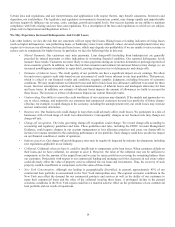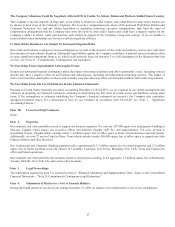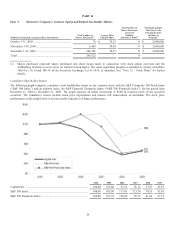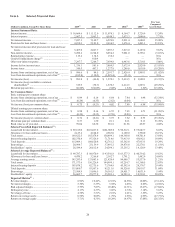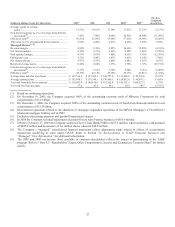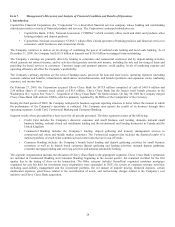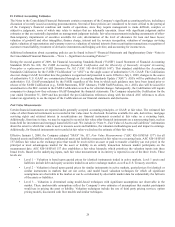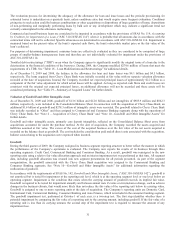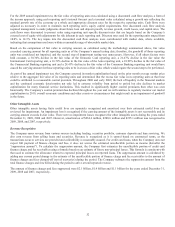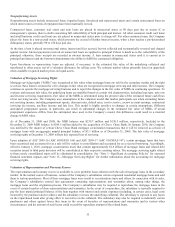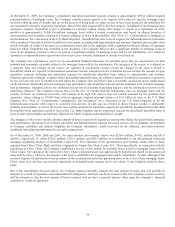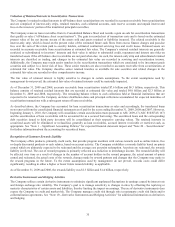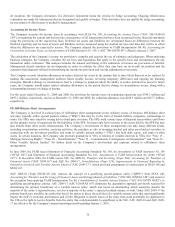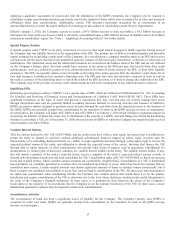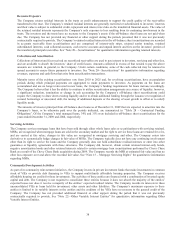Capital One 2009 Annual Report Download - page 41
Download and view the complete annual report
Please find page 41 of the 2009 Capital One annual report below. You can navigate through the pages in the report by either clicking on the pages listed below, or by using the keyword search tool below to find specific information within the annual report. 28
Item 7. Management’s Discussion and Analysis of Financial Condition and Results of Operations
I. Introduction
Capital One Financial Corporation (the “Corporation”) is a diversified financial services company whose banking and non-banking
subsidiaries market a variety of financial products and services. The Corporation’s principal subsidiaries are:
• Capital One Bank, (USA), National Association (“COBNA”) which currently offers credit and debit card products, other
lending products and deposit products.
• Capital One, National Association (“CONA”) which offers a broad spectrum of banking products and financial services to
consumers, small businesses and commercial clients.
The Company continues to deliver on its strategy of combining the power of national scale lending and local scale banking. As of
December 31, 2009, the Company had $115.8 billion in deposits and $136.8 billion in managed loans outstanding.
The Company’s earnings are primarily driven by lending to consumers and commercial customers and by deposit-taking activities
which generate net interest income, and by activities that generate non-interest income, including the sale and servicing of loans and
providing fee-based services to customers. Customer usage and payment patterns, credit quality, levels of marketing expense and
operating efficiency all affect the Company’s profitability.
The Company’s primary expenses are the costs of funding assets, provision for loan and lease losses, operating expenses (including
associate salaries and benefits, infrastructure maintenance and enhancements, and branch operations and expansion costs), marketing
expenses, and income taxes.
On February 27, 2009, the Corporation acquired Chevy Chase Bank for $475.9 million comprised of cash of $445.0 million and
2.56 million shares of common stock valued at $30.9 million. Chevy Chase Bank has the largest retail branch presence in the
Washington D.C. region. See “Note 2 – Acquisition of Chevy Chase Bank” for further details. On July 30, 2009 the Company merged
Chevy Chase Bank with and into CONA, which is primarily regulated by the Office of the Comptroller of the Currency.
During the third quarter of 2009, the Company realigned its business segment reporting structure to better reflect the manner in which
the performance of the Company’s operations is evaluated. The Company now reports the results of its business through three
operating segments: Credit Card, Commercial Banking and Consumer Banking.
Segment results where presented have been recast for all periods presented. The three segments consist of the following:
• Credit Card includes the Company’s domestic consumer and small business card lending, domestic national small
business lending, national closed end installment lending and the international card lending businesses in Canada and the
United Kingdom.
• Commercial Banking includes the Company’s lending, deposit gathering and treasury management services to
commercial real estate and middle market customers. The Commercial segment also includes the financial results of a
national portfolio of small ticket commercial real estate loans that are in run-off mode.
• Consumer Banking includes the Company’s branch based lending and deposit gathering activities for small business
customers as well as its branch based consumer deposit gathering and lending activities, national deposit gathering,
consumer mortgage lending and servicing activities and national automobile lending.
The segment reorganization includes the allocation of Chevy Chase Bank to the appropriate segments. Chevy Chase Bank’s operations
are included in Commercial Banking and Consumer Banking beginning in the second quarter, but remained in Other for the first
quarter due to the timing of close on the transaction. The Other category includes GreenPoint originated consumer mortgages
originated for sale but held for investment since originations were suspended in 2007, the results of corporate treasury activities,
including asset-liability management and the investment portfolio, the net impact of transfer pricing, brokered deposits, certain
unallocated expenses, gains/losses related to the securitization of assets, and restructuring charges related to the Company’s cost
initiative and Chevy Chase Bank acquisition.



